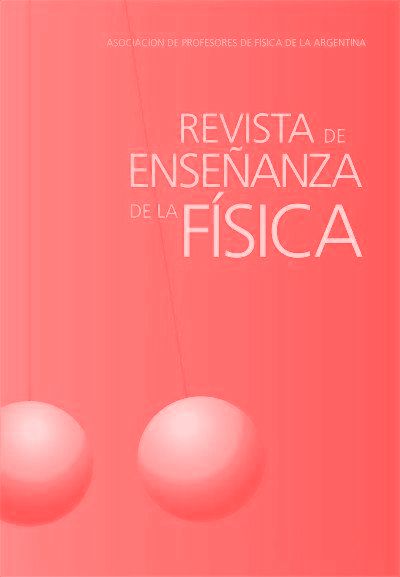Application of an investigative teaching sequence for the study of circuits of alternating current
DOI:
https://doi.org/10.55767/2451.6007.v32.n2.31322Keywords:
Experimental activities; Computational activities; Basic electricityAbstract
This research aims to elaborate and measure the effectiveness of a pedagogical proposal for the teaching of electrical circuits with alternating current and that contemplate the use of experimental and computational activities. It was decided to use the Investigative Teaching Sequence (SEI) as a teaching methodology, because it allows greater flexibility in the application of activi-ties. The locus of the research consists of a group of volunteers, consisting of nine students of the Bachelor of Science and Tech-nology course of a federal university in the state of Rio Grande do Norte. The research is versed in three basic pillars for the elaboration of SEI activities, they are: capture and use of the previous knowledge of the investigated; contextualized problemati-zation of new knowledge; and union of this new and previous knowledge to translate a situation or problem of the students' daily lives into a technical and scientific knowledge. In this case, this desired point is driven by the construction of a final project and preparation of technical reports. The results of the actions were positive, both from the perspective of content application and with regard to the quality of the tasks performed by the students. The productions of the reports, which enabled the collec-tive systematization among students in an integral way. Stand out here the translation of the previous knowledge and the theory studied for the construction of a technical and scientific knowledge at the time of the elaboration of textual productions and the final project, are the main contributions of this research to the teaching area.
References
Abegg, I., Ramos, D. B. (2013). Investigação de ferramentas e métodos de ensino de circuitos de corrente alternada para Curso Introdutório de Eletrotécnica. Revista Dynamis, 19(1), 30-42.
Alison, R. B y Leite, A. E. (2016). Possibilidades e dificuldades do uso da experimentação no ensino da física. Cadernos PDE, 1(8). Disponível em: http://www.diaadiaeducacao.pr.gov.br/portals/cadernospde/pdebusca/producoes_pde/2016/2016_artigo_fis_utfpr_rosanebrumalison.pdf. Acesso em: 23 set. 2019.
Aquino, A. A. y Lavor, O. P. (2020). Ensino de instalações elétricas residenciais: uma sequência didática a partir de uma aplicação mobile. Revista REAMEC, 8(2), 125-146. http://dx.doi.org/10.26571/reamec.v8i2.9862.
Bonadiman, H y Nonenmacher, S. E. B. (2003). Ensino de Física: uma proposta metodológica. IV Encontro Nacional de Pesquisa em Educação em Ciências. Bauru, São Paulo, p.25-29.
Boylestad, R. L. (2012). Introdução à análise de circuitos. 12. ed. São Paulo: Pearson Education do Brasil.
Carvalho, A. M. P. (2013). (Org.). O ensino de Ciências e a proposição de sequências de ensino investigativas. Ensino de Ciências por investigação: condições para implementação em sala de aula. São Paulo: CENCAGE Learning.
Carvalho, A. M. P. y Sasseron, L. H. (1998). Ciências no ensino fundamental: o conhecimento físico. São Paulo: Scipione.
Costa, G. y Catunda, T. (2009). Circuitos elétricos segundo a abordagem de demonstrações investigativas: resultados preliminares. Disponível em: http://www.sbf1.sbfisica.org.br/eventos/snef/xviii/sys/resumos/T0198-1.pdf. Acesso em: 12 nov. 2020.
Feitosa, M. C., Aquino, A. A. y Lavor, O. P. (2020). Ensino de retas e planos com auxílio do software Geogebra 3D Mo-bile. Revista REAMEC, 8(2), 374-391. DOI: 10.26571/reamec.v8i2.10042
Gussow, M. (2009). Eletricidade Básica. 2. ed. São Paulo: Pearson Makron Books.
Macêdo, J. A. y Dickman, A. G. (2009). Simulações computacionais como ferramentas auxiliares ao ensino de concei-tos básicos de eletricidade. XVIII Simpósio Nacional de Ensino de Física – SNEF, Vitória/ES.
Miranda, R. M. y Bechara, M. J. (2004). Uso de simulações em disciplinas básicas de mecânica em um curso de licenci-atura em física. Encontro de Pesquisa em Ensino de Física, 9, Jaboticatubas, MG. Anais. São Paulo: Sociedade Brasileira de Física.
Moreira, M. A. (2013). Grandes desafios para o ensino da física na educação contemporânea. XI Conferencia Interame-ricana sobre Enseñanza de la Física, Guayaquil.
Pacca, J. L. A. et al. (2003). Corrente elétrica e circuito elétrico: algumas concepções do senso comum. Caderno Brasi-leiro de Ensino de Física, Florianópolis, 20(2), 151-167.
Piaget, J. (1978). A tomada da consciência. Tradução de Edson Braga de Souza. São Paulo: Melhoramentos.
Santos, A. V. dos, Santos, S. R. y Fraga, L. M. (2002). Sistema de realidade virtual para simulação e visualização de car-gas pontuais discretas e seu campo elétrico. Revista Brasileira de Ensino de Física, 24(2), 185-195.
Scarpati, R. (2018). Atividades computacionais e experimentais como ferramentas de ensino da eletricidade. Disserta-ção (Mestrado) - Programa de Pós-graduação em Ensino de Ciências Exatas, Universidade do Vale do Taquari, Lajeado.
Vygotsky, L. S. (1999). Formação social da mente: o desenvolvimento dos processos psicológicos superiores. Tradução de José Cipolla Netto et al. 6. ed. São Paulo: Martins Fontes.
Downloads
Published
Issue
Section
License

This work is licensed under a Creative Commons Attribution-NonCommercial-NoDerivatives 4.0 International License.
Aquellos autores/as que tengan publicaciones con esta revista, aceptan los términos siguientes:Los autores/as conservarán sus derechos de copiar y redistribuir el material, bajo los términos estipulados en la Licencia de reconocimiento, no comercial, sin obras derivadas de Creative Commons que permite a terceros compartir la obra bajo las siguientes condiciones:
- Reconocimiento — Debe reconocer adecuadamente la autoría, proporcionar un enlace a la licencia e indicar si se han realizado cambios. Puede hacerlo de cualquier manera razonable, pero no de una manera que sugiera que tiene el apoyo del licenciador o lo recibe por el uso que hace.
- NoComercial — No puede utilizar el material para una finalidad comercial.
- SinObraDerivada — Si remezcla, transforma o crea a partir del material, no puede difundir el material modificado.
- Los autores/as podrán adoptar otros acuerdos de licencia no exclusiva de distribución de la versión de la obra publicada (p. ej.: depositarla en un archivo telemático institucional o publicarla en un volumen monográfico) siempre que se indique la publicación inicial en esta revista.
- Se permite y recomienda a los autores/as difundir su obra a través de Internet (p. ej.: en archivos telemáticos institucionales o en su página web) antes y durante el proceso de envío, lo cual puede producir intercambios interesantes y aumentar las citas de la obra publicada. (Véase El efecto del acceso abierto).










